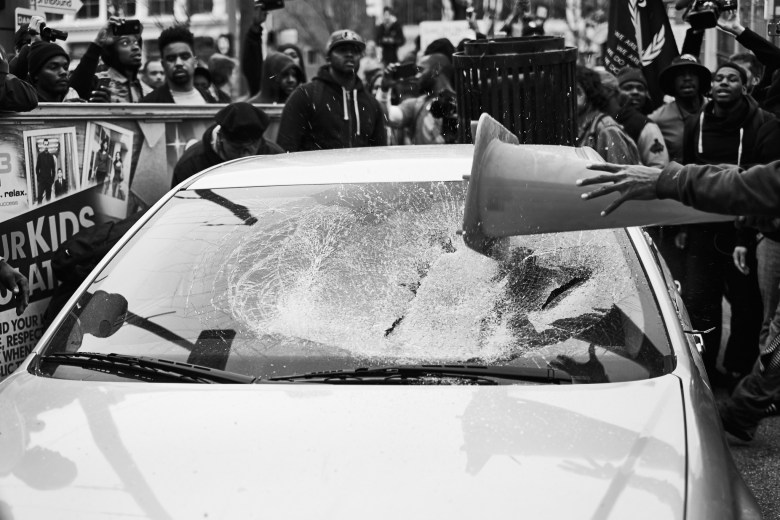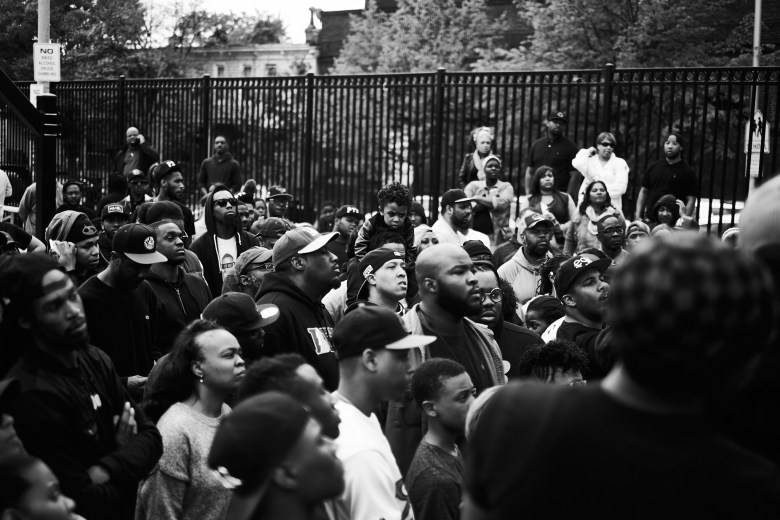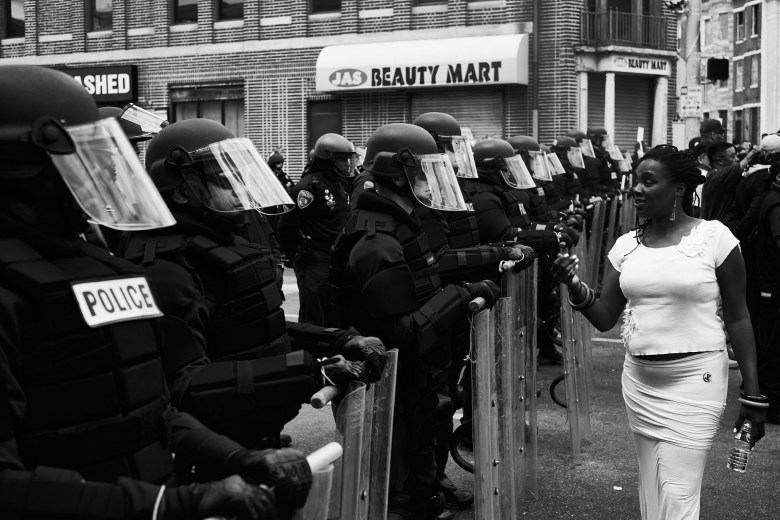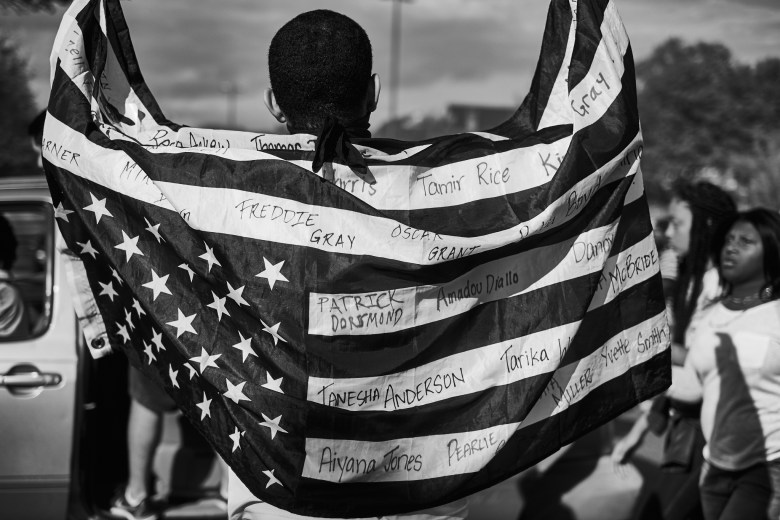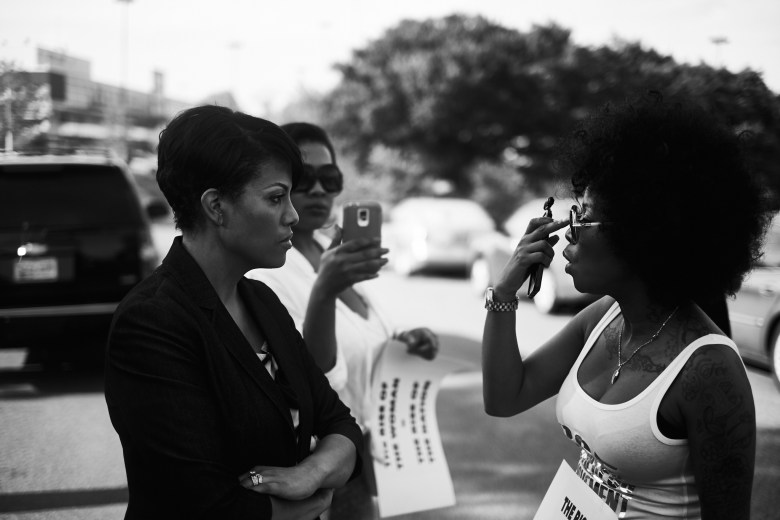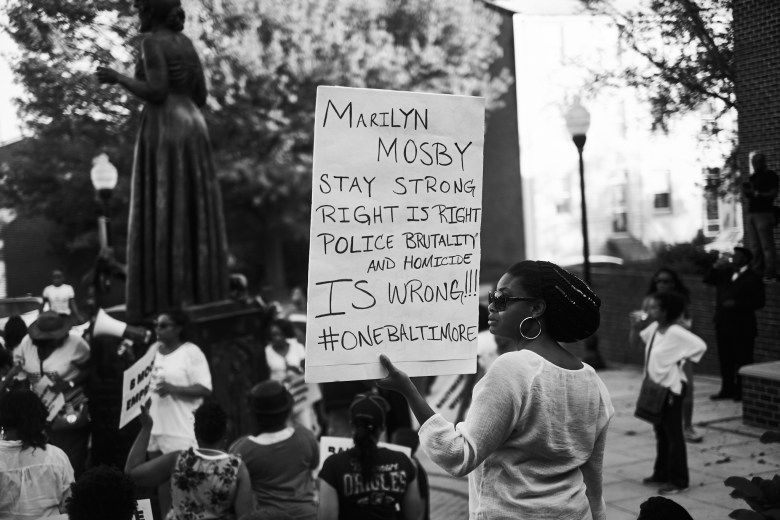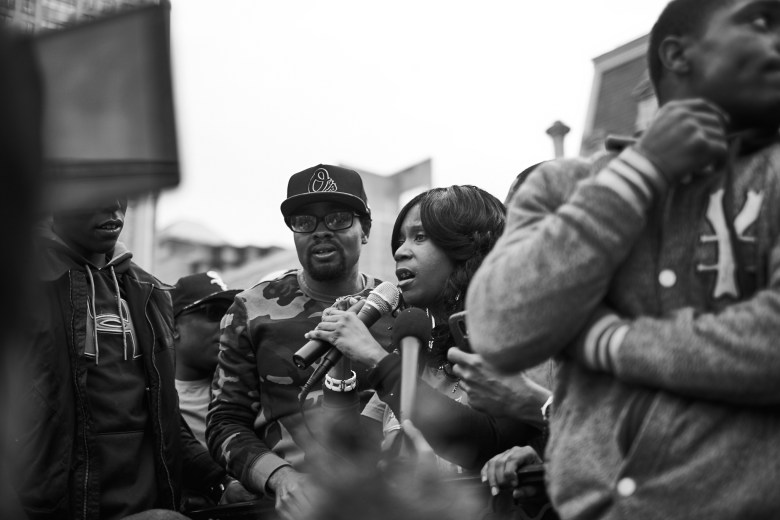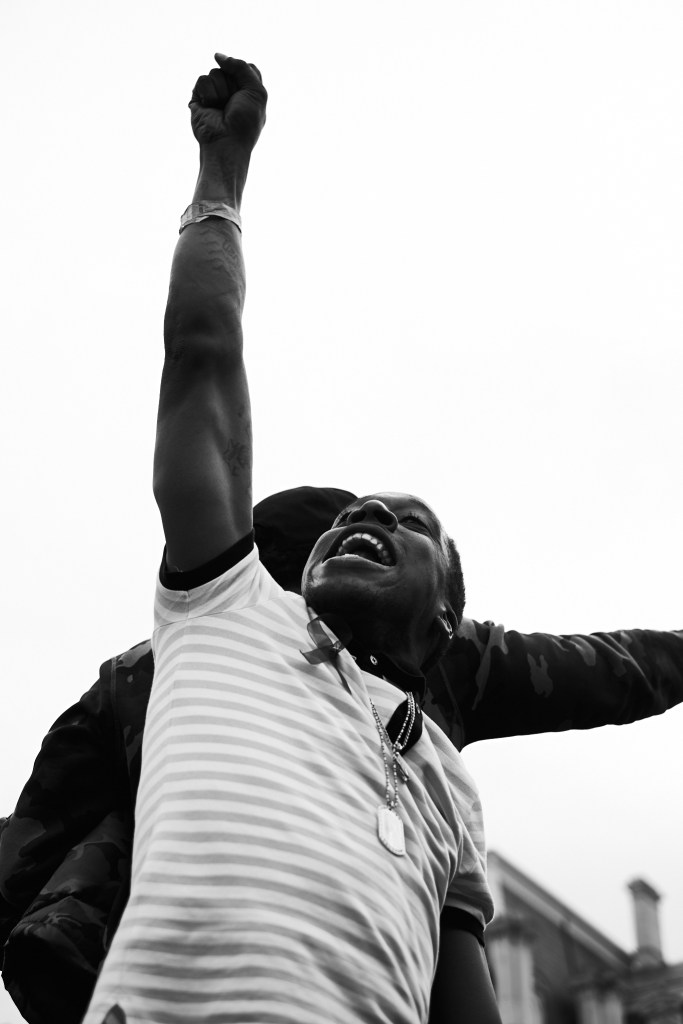“I think the death of Freddie Gray inspired a whole new generation of activists,” photographer Devin Allen tells me on a phone call earlier this year.
At the time of Gray’s death, Allen was beginning to learn photography, snapping photos all over the city. He got his first camera in 2013 — a gift from his grandmother — and after the deaths of two of his close friends, decided he wanted to treat photography as more than a hobby.
He took photos of protests organized here in Baltimore in solidarity with activists in Ferguson, Missouri. He posted everything to his social media accounts on Instagram and X (which was then Twitter) when he heard that police had injured Freddie Gray.
“I just was like, I’m dedicating my page to Freddie Gray,” he says. He decided to go to every protest in the city that he could.
His images went viral and eventually caught the attention of TIME magazine. In the image TIME published on its cover, a Black man with a bandana covering the lower half of his face runs off camera, an army of black-clad officers behind him. Allen was only the third amateur photographer to be published in the magazine. He got another cover in 2020 for a shot taken during a protest for trans rights.
Allen said that Gray’s death and the Uprising that followed instilled in the people around him an increased resolution to change the world around them for the better.
“I think people were just tired,” he said. He saw many of the people he grew up with decide to take matters into their own hands, starting community organizations and even running for public office. “The fact that Brandon Scott is the mayor is crazy to me,” he says. “I protested with him in [anti-violence group] 300 Men.”
“Post-Freddie Gray, at first, we just were living, but now we’re living with a purpose.”
This selection of images is from the spring of 2015, during the time of the initial Uprising. They capture the city’s response to the death of Freddie Gray, a 25-year-old Black man. The incident sparked widespread protests and calls for justice.
The images published here are from a trove of over 500 that Allen shared with Baltimore Beat. They range from moments of state violence — the Baltimore Police Department marching — to moments of Black joy and solidarity.
You can see more of these images on April 16 at the Baltimore Museum of Art exhibit Heavy with History: Devin Allen and the Baltimore Uprising. The exhibition was guest curated by Lisa Snowden, Editor-in-Chief and co-founder of Baltimore Beat. (Lisa Snowden and Teri Henderson)
